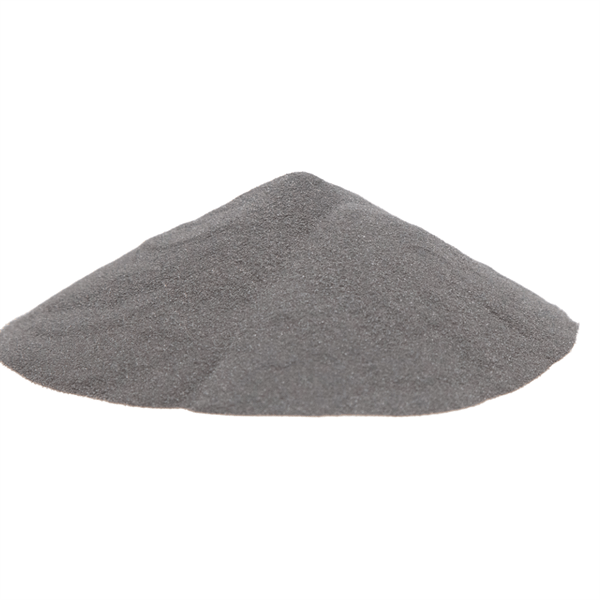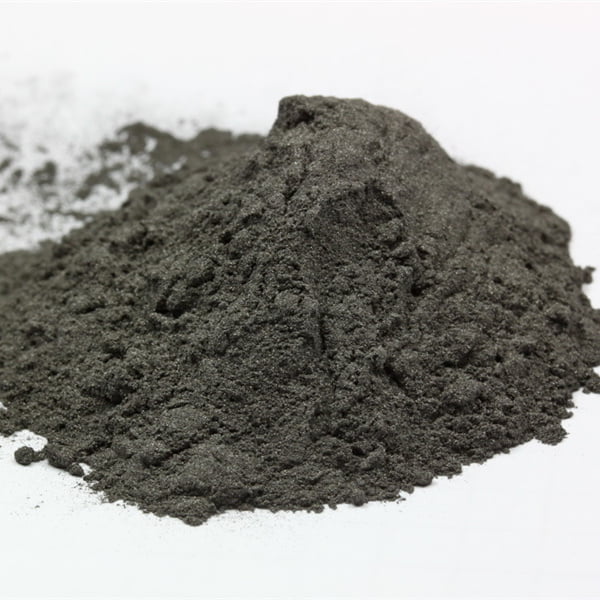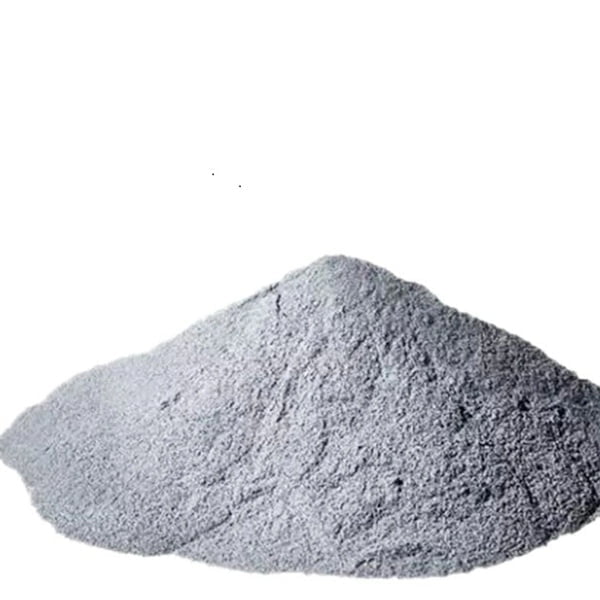Aperçu des poudres d'acier inoxydable
Table des matières
Poudre d'acier inoxydable is a versatile material with applications across many industries. This guide provides a comprehensive overview of stainless steel powder, including manufacturing methods, grades, properties, applications, and more.
Aperçu des poudres d'acier inoxydable
Stainless steel powder refers to stainless steel particles in a powder form. It is made by atomizing or reducing stainless steel into a fine powder for various industrial purposes.
Some key properties and advantages of stainless steel powder include:
- Haute résistance et durabilité
- Resistance to corrosion and wear
- Ability to be sintered into complex shapes
- Range of alloying elements to customize properties
- Recyclabilité
- Rapport coût-efficacité
Stainless steel powder is used in applications such as 3D printing, surface coating, brazing, welding, powder metallurgy parts, and more. The global stainless steel powder market size was over $1 billion in 2021 and is projected to grow at a CAGR of over 8% from 2022 to 2030.

Types de Poudre d'acier inoxydable
There are various grades and types of stainless steel powder categorized by microstructure, alloying elements, properties, and intended applications.
| Type | Description | Composition | Propriétés | Applications |
|---|---|---|---|---|
| Austénitique | Non-magnetic, higher corrosion resistance | Cr, Ni, Mo | Ductile, non-hardenable | Automotive, architecture, chemicals |
| Martensitique | Magnetic, higher strength | Cr, lower Ni | Hardenable, less corrosion resistance | Cutlery, surgical instruments, valves |
| Ferritique | Magnetic, lower cost | Cr, no Ni | Less ductile, moderately corrosion resistant | Automotive, appliances, industrial uses |
| Duplex | Balance of strength and corrosion resistance | Cr, Ni, Mo, N | Good weldability, higher cost | Chemical processing, oil & gas, marine, paper |
| Durcissement par précipitation | Hardenable martensitic grade | Cr, Ni, Cu, Al | High strength after aging treatment | Aérospatiale, production d'énergie |
Manufacturing Process for Stainless Steel Powder
Stainless steel powder can be produced through various methods. The main manufacturing processes include:
Atomisation – Melted stainless steel alloys are atomized into fine droplets that solidify into powder particles. Water, gas, plasma, or centrifugal atomization methods are used. This produces spherical, refined powders ideal for 3D printing.
Électrolyse – A stainless steel object is suspended as the anode in an electrolytic cell. Oxygen generated at the anode reacts with the steel to form iron and chromium oxides powder.
Fraisage – Stainless steel scrap is mechanically milled into an irregular, angular powder form well suited for pressing into compacts. Lower cost but wider particle size distribution.
Réduction – Stainless steel oxides are reduced using hydrogen or carbon monoxide to produce a fine stainless steel powder.
Moulage par injection de métal – A feedstock of stainless steel powder and binder is injection molded then sintered to make complex net-shape parts.
Each method results in powders with different sizes, shapes, purity, and cost. The manufacturing process is tailored based on the application.
Grades of Stainless Steel Powder
Various standard grades of stainless steel powder are commercially available. Common alloying elements include chromium, nickel, molybdenum, manganese, and nitrogen. Here are some of the most widely used grades:
- 304/304L – Most popular grade, excellent corrosion resistance
- 316/316L – Added molybdenum for pitting/crevice corrosion resistance
- 410 – Basic martensitic grade, general purpose
- 420 – Higher carbon content, used for cutting tools
- 17-4PH – Martensitic precipitation hardening grade, good strength
- 15-5PH – Precipitation hardening, higher strength and hardness
- Custom grades – Optimized composition for sintering, 3D printing, etc.
Properties of Stainless Steel Powder
Key properties of stainless steel powder include:
Taille des particules – Generally 5 to 150 microns. Narrower distribution improves sintering.
Morphologie – Shape is spherical for atomization, irregular for milling. Affects flow and packing density.
Densité apparente – Typically 40 to 50% of true density indicating porosity between particles.
Capacité d'écoulement – Important for die filling. Improved by spherical particles and additives.
Compressibilité – Degree of densification when compacted. Critical for sintering.
Fritabilité – Ability to bond into dense mass upon heating. Affected by purity, size, shape.
Composition de l'alliage – Determines properties like strength, corrosion resistance, wear resistance, etc.
By controlling the powder characteristics and composition, the properties of finished sintered parts can be tailored as per application needs.
Applications de Poudre d'acier inoxydable
Some major applications of stainless steel powder include:
Impression 3D
Also known as additive manufacturing, 3D printing builds up parts layer by layer from stainless steel powder using laser or electron beam energy. Benefits include design freedom, reduced waste, rapid prototyping, and mass customization. Common methods include direct metal laser sintering (DMLS), selective laser melting (SLM), and electron beam melting (EBM).
Métallurgie des poudres
In powder metallurgy, stainless steel powder is compacted then sintered to fabricate high performance parts like gears, filters, and automotive components. Allows complex shapes to be mass produced at low cost with minimal material waste.
Revêtements de surface
Stainless steel powder coatings are applied using thermal spray or laser cladding methods. Provides wear resistance, corrosion protection, thermal barriers, and electrical conductivity to component surfaces operating in demanding conditions.
Brasage et soudure
Stainless steel powder paste can be used as filler to join stainless steel components requiring dissimilar material bonds or large joint gaps. Brazing provides strong high temperature joints.
Soudage
Specialized stainless steel powder flux-cored wires are used for welding stainless steel materials, improving weld strength and corrosion resistance compared to solid wire. The powder core provides alloying elements.
Granular Activated Carbon
Stainless steel powder is added during production of activated carbon to increase mechanical strength and abrasion resistance for water treatment applications.
Other Niche Applications
Stainless steel powder also finds use in manufacture of diamond tools, precursor for nanomaterials, electromagnetic shielding, manufacture of steel powder cores, and friction materials.
How to Choose Stainless Steel Powder
Selection of appropriate stainless steel powder depends on factors such as:
- Intended application – This determines the required powder properties and alloy grade. For example, 316L powder for corrosion resistance or maraging steel for strength.
- Processus de production – Atomized, milled, or blended powder tailored for AM, pressing, thermal spray, etc.
- Taille et forme des particules – Spherical and fine powder around 20 microns for AM versus irregular larger powder for pressing.
- Niveau de pureté – High purity above 99.5% is necessary for critical applications like medical implants.
- Densité apparente – Higher density above 3 g/cc is desirable for better flow and compaction.
- Coût – Prices range from $50-$150 per kg based on grade, purity, particle characteristics, and purchase volume.
Leading global suppliers include Sandvik, Höganäs, Carpenter Powder Products, Praxair Surface Technologies, and CNPC Powder who can provide powders optimized for specific requirements. It is best to consult closely with suppliers during new product development.

Comparison of Stainless Steel Powder Manufacturing Processes
| Processus | Morphologie des particules | Taille des particules | La pureté | Coût | Applications |
|---|---|---|---|---|---|
| Atomisation du gaz | Sphérique | 5 – 150 μm | Haut | Moyen | Additive manufacturing, surface coating |
| Vaporisation de l'eau | Irrégulier, sphérique | 20 – 300 μm | Moyen | Faible | Press and sinter parts, coatings |
| Air plasma atomization | Surtout sphérique | 10 - 150 μm | Moyen | Moyen | Metal injection molding, pressing |
| Atomisation centrifuge | Sphérique | 20 - 150 μm | Haut | Haut | Fabrication additive |
| Fraisage mécanique | Irrégulier, anguleux | 1 – 350 μm | Faible | Faible | Press and sinter parts |
| Électrolyse | Dendritic, irregular | 1 – 150 μm | Moyen | Moyen | Surface coating, powder metallurgy |
| Metal reduction | Irrégulier, poreux | 10 - 150 μm | Faible | Faible | Press and sinter parts |
Installation of Stainless Steel Powder Production Plant
Installing a stainless steel powder production plant requires attention to factors like:
- Site selection – Adequate space for equipment, raw material and product storage, utilities, effluent treatment. Easy access for transport.
- Utilitaires – Electrical power supply, process water, compressed air, inert gas lines.
- Fondation – Strong concrete foundation for atomizers, mills, and reduction furnaces. Vibration damping supports.
- Machines – Install key equipment like high temperature furnaces, glove boxes, atomizers, grinding mills, cyclones, sieves per manufacturer instructions.
- Auxiliary systems – Material handling, dust collection, gas scrubbing, waste treatment, controls and automation.
- Sécurité – Explosion proof electricals, fire suppression, adequate ventilation, PPE for metal powder handling.
- Mise en service – Trial production runs to verify powder quality, production rate, safe material handling, environmental compliance.
- Certification – ISO 9001 quality system registration. Industry specific certifications from ASME, ASTM, etc.
Proper installation and commissioning by experienced specialists ensures a stainless steel powder plant has safe, optimized operations and maximum production capacity.
Operation and Maintenance of Stainless Steel Powder Equipment
To achieve consistent stainless steel powder quality and productivity, main operation and maintenance guidelines include:
- Follow standard operating procedures for startup, shutdown, batch scheduling, material handling, safety systems, and environmental monitoring.
- Monitor key process parameters like temperature, pressure, flow rates, power consumption and maintain within optimized limits.
- Take representative samples of powder batches and test for size, shape, chemistry, density, flowability per ASTM standards.
- Perform preventive maintenance on schedule for furnaces, gas lines, atomizers, cyclones, hammer mills, sieves etc.
- Inspect rotating equipment like motors, gears, impellers for vibration, noise and lubricate bearings.
- Frequently calibrate instrumentation like pressure gauges, RTDs, flow meters to ensure accuracy.
- Inspect refractory and heating elements in furnaces and repair/replace as needed to avoid unplanned breakdowns.
- Ensure dust extraction systems operate efficiently to minimize explosive hazards. Follow housekeeping SOPs.
- Audit process safety systems like emergency stops, fire/gas detection, ventilation periodically.
With trained personnel and diligent maintenance procedures, stainless steel powder production facilities can operate for years without major issues.
How to Select a Stainless Steel Powder Supplier
When selecting a supplier for stainless steel powder, crucial factors to consider include:
- Powder specifications – Ability to supply the required grade, particle size/shape, purity level, density and flow characteristics.
- Certifications de qualité – Supplier should have ISO 9001, AS9100, Nadcap accreditation, supporting quality documentation.
- Expertise technique – Metallurgy knowledge to customize powder for specific applications and provide application support.
- Manufacturing capability – Utilize modern atomization, milling and screening technology to produce powders consistently.
- Testing capability – Fully equipped laboratory for comprehensive powder testing and characterization to international standards.
- Compétence en matière de R&D – Engage in research and new product development for emerging applications like AM.
- Service à la clientèle – Timely response to inquiries, orders and requests. Clear terms on pricing, delivery, returns.
- Conformité réglementaire – Documentation like SDS, compliance certifications for environmental regulations.
- Logistics network – Ability to ship material safely in hazardous cargo-compliant packaging.
Leading global suppliers of stainless steel powder include Sandvik, Carpenter Powder Products, Hoganas, Praxair Surface Technologies and CNPC Powder.
Avantages et inconvénients de Poudre d'acier inoxydable
| Pour | Cons |
|---|---|
| Excellent strength and corrosion resistance | Relatively high cost versus carbon steel |
| Can be formed into complex shapes via sintering and AM | Lower thermal conductivity than other metals |
| Wide range of grades for varied applications | Requires surface finishing for improved aesthetics |
| Highly customizable properties with alloying | Difficult to machine in certain hardened grades |
| Easy to sanitize for hygiene in food/medical uses | May be subject to pitting corrosion in certain environments |
| Bonnes propriétés à haute température | Not as electrically/magnetically conductive as other metals |
| 100% recyclable and environmentally friendly | Special handling required due to reactivity of fine powder |
| Established manufacturing methods with high availability | Limited number of qualified suppliers globally |
Stainless Steel Powder vs. Stainless Steel Solids
| Paramètres | Poudre d'acier inoxydable | Stainless Steel Solids |
|---|---|---|
| État | Fine powder form | Solid bar, plate, pipe stock |
| Fabrication | Atomization, electrolysis, milling | Casting, rolling, machining of stainless ingots |
| Composition | Often custom alloys | Standard 300/400 series grades |
| Applications | Additive manufacturing, powder metallurgy | General fabrication of weldments and finished components |
| Propriétés | Fine grain size, strain-free | Coarser grains, possible stresses |
| Traitement | Compactage et frittage | Bending, machining, welding, heat treatment |
| Coût | $50-150 par kg | $3-10 per kg for commodity grades |
| Disponibilité | Limited number of suppliers | Readily available globally |
| Délai d'exécution | Can be long for custom orders | Shorter lead times for standard grades |

FAQ
Q: What are the most common grades of stainless steel powder?
A: 304, 304L, and 316L are the most common austenitic grades while 410 and 17-4PH are widely used martensitic grades. Custom alloys optimized for AM or sintering applications are also available.
Q: What is the typical size range of stainless steel powder particles?
A: Particle sizes can range from around 1 micron to over 150 microns. However, 10-45 micron size is common for many applications like MIM, AM, and pressing.
Q: How is corrosion resistance affected in stainless steel powder metallurgy parts?
A: P/M parts can show slightly lower corrosion resistance than wrought forms due to residual porosity if not fully densified. Proper sintering and finishing minimizes this effect.
Q: What causes surface oxidation during handling of stainless steel powder?
A: Fine stainless steel powder can oxidize readily when exposed to air. Use of vacuum or inert gas atmosphere is recommended for handling to prevent oxidation.
Q: How is workability and machinability of P/M stainless steels compared to wrought forms?
A: P/M stainless is less ductile and machinable than wrought forms due to porosity and higher hardness. Green machining of powder compacts prior to sintering improves finish.
Q: What is the typical production rate of commercial stainless steel powder plants?
A: Production rate depends on equipment size and process. Typical medium scale plants produce 100-300 kg/hour of stainless steel powder.
Q: What safety precautions are required when working with stainless steel powder?
A: Avoid dust inhalation by using respirators. Ensure adequate ventilation, grounding, and spark-proof lighting to prevent dust explosions. Use dust extraction and PPE.
Conclusion
Stainless steel powder offers distinct advantages of strength, corrosion resistance, and fabrication flexibility. With varied manufacturing methods, alloy grades, particle characteristics and applications, stainless steel powder provides design engineers enhanced options to develop innovative components using powder metallurgy and additive techniques. By selecting the appropriate powder, production method, and process parameters, stainless steel powder can deliver superior performance in the most demanding conditions across industries.
Partager sur
MET3DP Technology Co. est un fournisseur de premier plan de solutions de fabrication additive dont le siège se trouve à Qingdao, en Chine. Notre société est spécialisée dans les équipements d'impression 3D et les poudres métalliques de haute performance pour les applications industrielles.
Articles connexes

Supports imprimés en 3D pour les capteurs radar automobiles : Précision et performance
Lire la suite "À propos de Met3DP
Mise à jour récente
Notre produit
CONTACTEZ-NOUS
Vous avez des questions ? Envoyez-nous un message dès maintenant ! Nous répondrons à votre demande avec toute une équipe dès réception de votre message.
Obtenir les informations de Metal3DP
Brochure du produit
Obtenir les derniers produits et la liste des prix

Poudres métalliques pour l'impression 3D et la fabrication additive
PRODUIT
cONTACT INFO
- Ville de Qingdao, Shandong, Chine
- [email protected]
- [email protected]
- +86 19116340731








